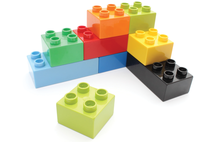Snapped Together
Canonical wants to leave the Debian package format behind and give Snappy Personal a new lease on life.
|

Krzysztof Ratajczak, 123RF
Canonical wants to leave the Debian package format behind and give Snappy Personal a new lease on life.
Unlike Windows, Linux systems come with a large number of packages. Package management components include a format for the software archives as well as software with a front end for administering the archive.
Until now, Canonical has used the DEB format [1], the dpkg [2] package manager, and Apt [3] as a command-line front end. Additionally, the company offers various tools with a graphical interface that make tasks like installation, deinstallation, and administration of packages easy for users.
These fundamentals will possibly undergo a radical change in the future since Canonical has created its own package format Snappy Personal. This effort belongs to further development of the Click format [4] that was developed for Ubuntu Touch (Figure 1).
[...]
Pages: 2
These package systems have names that make them sound like they could be crunchy candy bars, but in fact, they are formats that could revolutionize software installation.
Testers constantly encounter new trends in the experimental branches of Linux distributions. I look at who drives Linux forward and how the future is shaping up.
Muon is the package manager for Kubuntu, an alternative to the APT package manager. We look at how the interface and the conceptual foundation for Muon have changed radically.
After several boring-in-a-good-way versions, Canonical has shaken things up with the new LTS edition of the popular Ubuntu Linux distribution.
Technologies like Flatpak and Snap make it look like the concepts behind earlier package management systems were a thing of the past. The current status of software administration in Linux shows that this impression is wrong.
© 2026 Linux New Media USA, LLC – Legal Notice